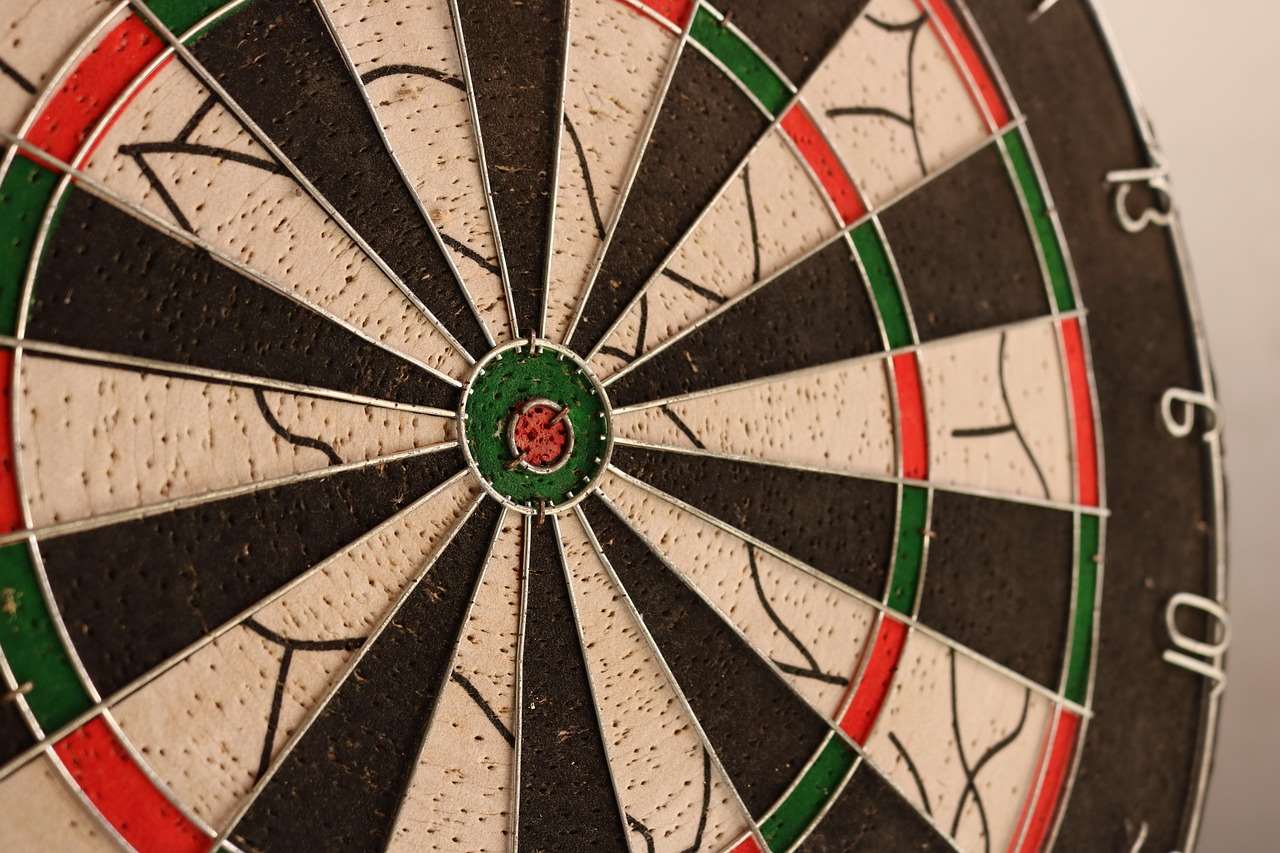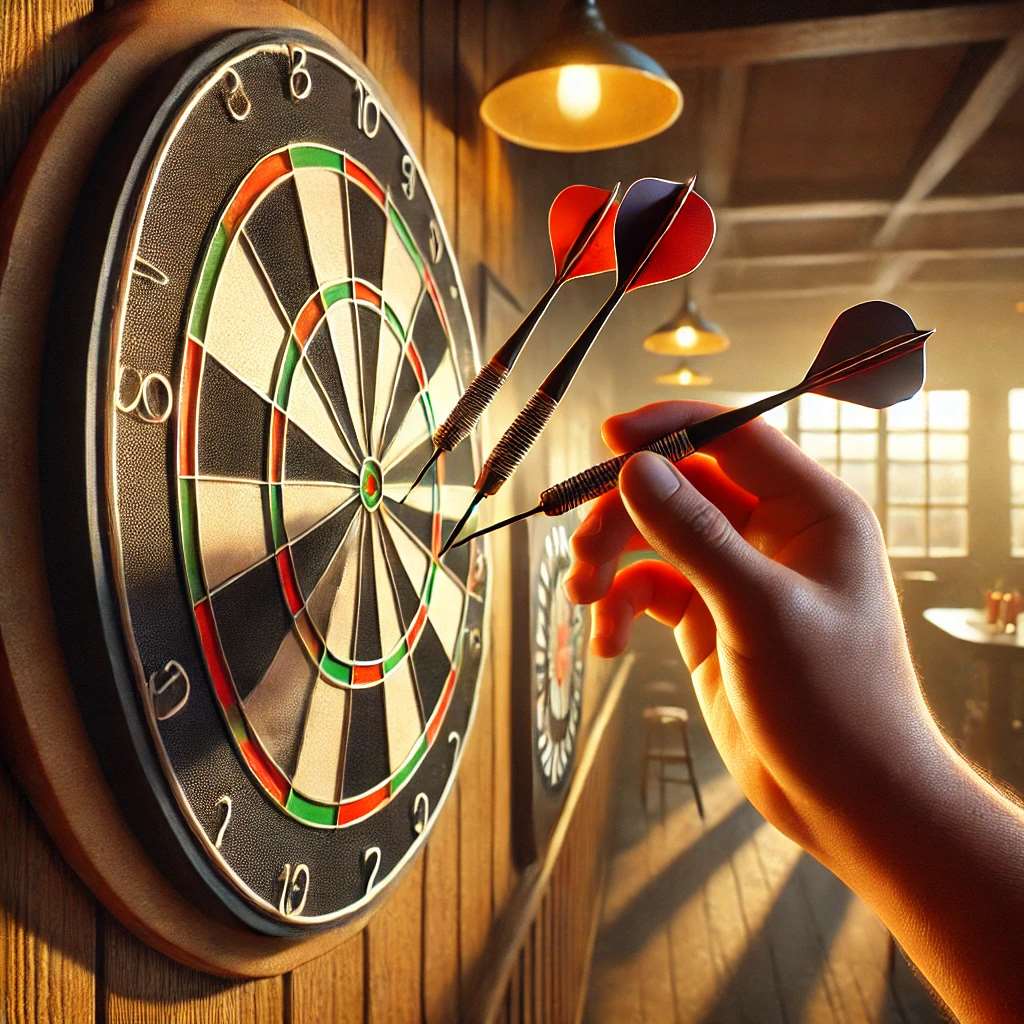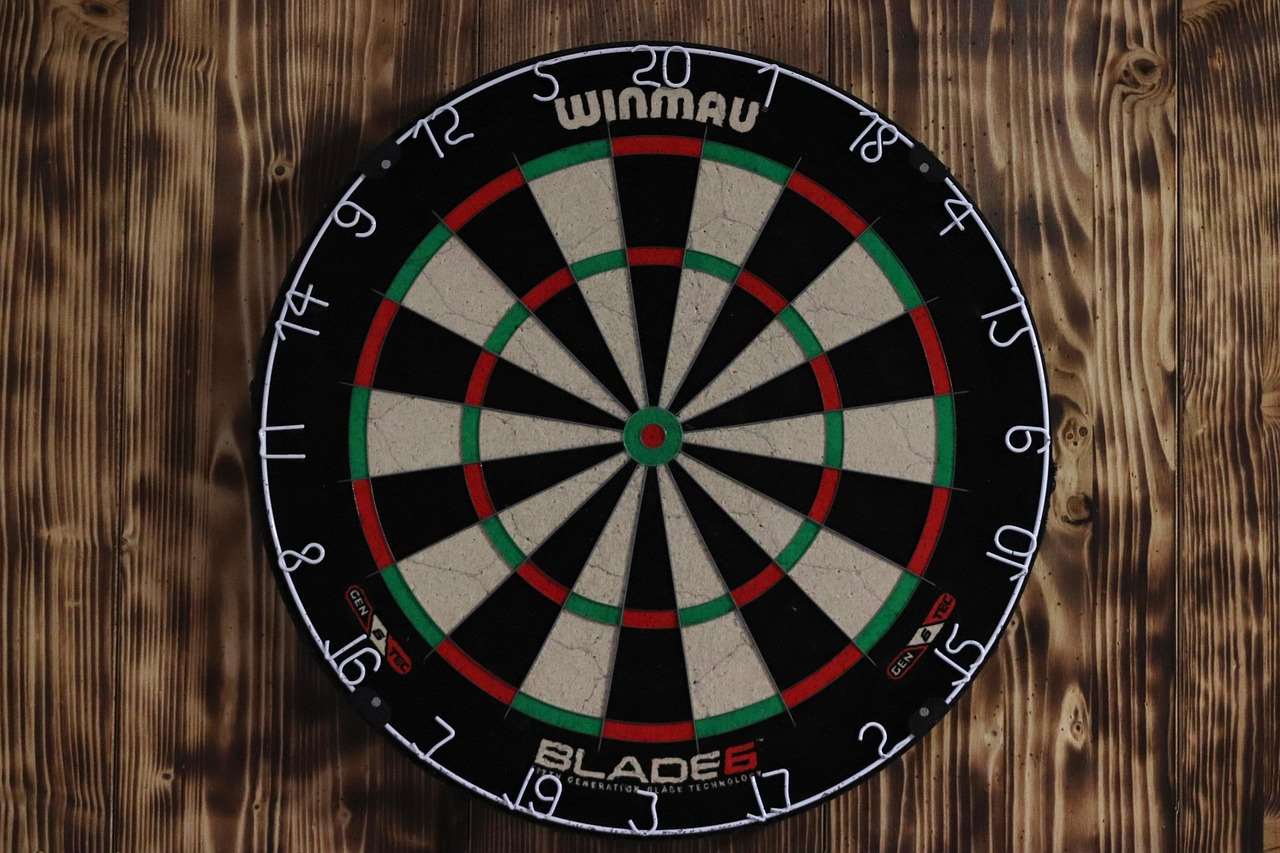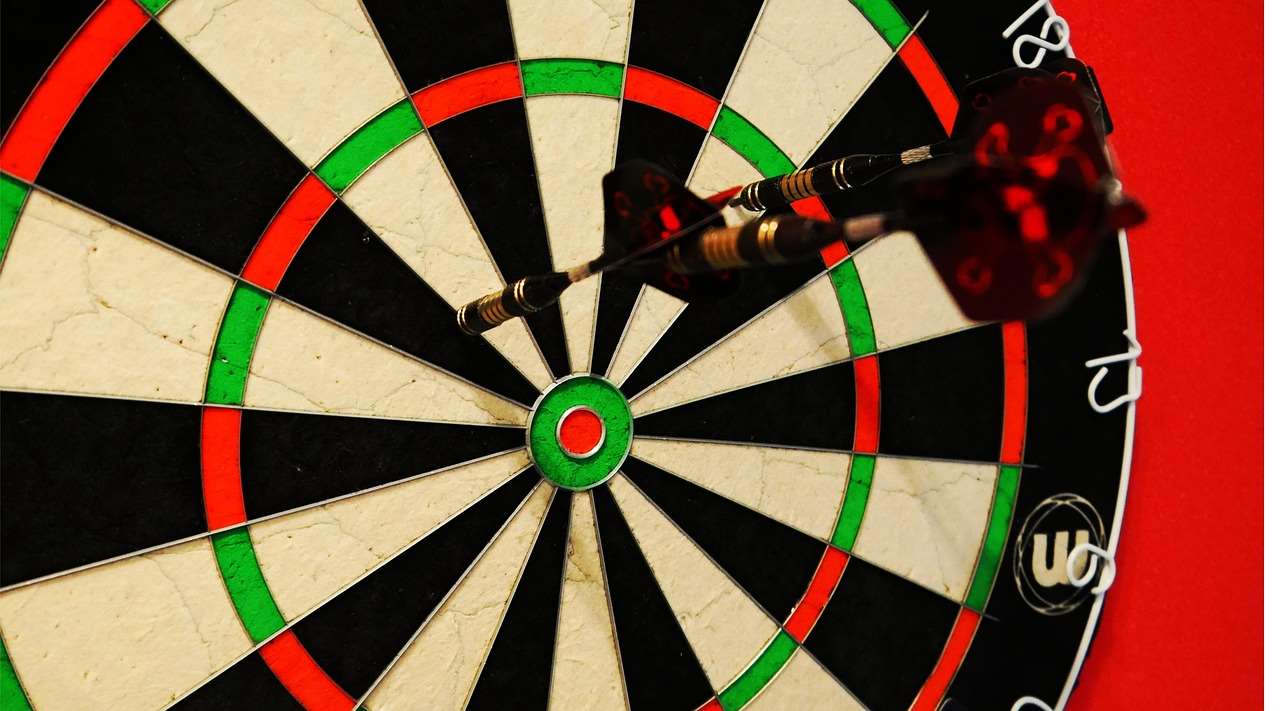So, what is a darts shaft? Simply put, a dart shaft is the slender, cylindrical part of a dart that connects the barrel (where you grip the dart) to the flight (the fins at the rear). This seemingly simple component plays a crucial role in a dart’s flight and overall performance. This article will delve into the intricacies of darts shafts, exploring their materials, designs, and the impact they have on your game.
⚠️ Still Using Pen & Paper (or a Chalkboard)?! ⚠️
Step into the future! The Dart Counter App handles all the scoring, suggests checkouts, and tracks your stats automatically. It's easier than you think!
Try the Smart Dart Counter App FREE!Ready for an upgrade? Click above!
Choosing the right shaft is just as important as selecting the perfect barrel and flights. Different shafts offer various levels of flexibility and weight, influencing the dart’s trajectory and stability. Understanding these differences can significantly improve your accuracy and scores.
What is a Darts Shaft and Why Does it Matter?
As we’ve established, what is a darts shaft? It’s the connector between the barrel and the flight. But why does it matter so much? The shaft’s characteristics directly impact your throw. A too-flexible shaft can cause your dart to wobble mid-flight, leading to poor accuracy. Conversely, a too-rigid shaft might not absorb enough shock from the throw, potentially damaging your flights or even the dart’s point. The ideal shaft is a balance between flexibility and stability, a sweet spot that maximizes accuracy and reduces wasted throws.
Think of it like this: your dart shaft acts as a shock absorber and a stabilizer. It helps to smooth out any inconsistencies in your throw and ensures that your dart travels as straight as possible to the target. This stability is crucial, especially at higher skill levels, where even small deviations can mean the difference between a bullseye and a miss.

The material of the shaft also plays a significant role in its performance. Common materials include nylon, aluminum, and carbon fiber. Each material offers a unique blend of flexibility, weight, and durability. We’ll discuss this in more detail later.
Materials Used in Darts Shafts
Nylon Darts Shafts
Nylon shafts are a popular choice for beginners and intermediate players due to their affordability and relative durability. They provide a good balance of flexibility and stiffness, offering a smooth, consistent throw for many players. Nylon shafts are also lightweight, contributing to a more comfortable throwing experience.
Aluminum Darts Shafts
Aluminum shafts are favored by players who prefer a stiffer and more rigid feel. They are known for their durability and resistance to bending, making them a great choice for power throwers. However, aluminum shafts can be slightly heavier than nylon ones, potentially affecting your throwing style if you’re not used to the increased weight. Choosing between nylon and aluminum often comes down to personal preference and playing style.
Carbon Fiber Darts Shafts
For those seeking the ultimate in performance, carbon fiber shafts represent a premium option. These shafts are incredibly lightweight, stiff, and durable, offering superior stability and accuracy. Carbon fiber shafts are generally more expensive than their nylon and aluminum counterparts, but their enhanced performance makes them a worthwhile investment for serious players aiming for consistency and superior results. They offer a noticeable difference in terms of flight stability and overall precision.

When considering what is a darts shaft, remember that the material influences the feel and performance. Experimentation is key to finding the right shaft for your style. You might even find yourself using different shaft materials depending on the type of game you’re playing or the specific darts you are using. Some players may prefer a heavier feel for added stability, while others prioritize lightness for a quicker release.
Darts Shaft Length and Diameter
The length and diameter of your dart shaft are just as important as the material. Different lengths offer various levels of balance and flight characteristics. A longer shaft might improve stability but may feel less comfortable or require an adjustment to your throwing style. Similarly, the diameter of the shaft can influence the grip and overall feel of the dart in your hand. A thinner shaft might be preferable for those with smaller hands, while a thicker shaft might offer more stability.
Experimenting with different lengths and diameters is a great way to find what suits your personal preference and throwing style. Consider factors like your grip, hand size, and desired level of stability. The perfect shaft is one that allows for a smooth, natural release and consistent flight.
Maintaining Your Darts Shafts
Proper maintenance will significantly extend the life of your darts shafts. While they’re generally resilient, frequent cleaning is advisable. Regularly wipe them down after use to remove any dirt or residue that can affect the shaft’s integrity or performance. Avoid storing your darts in damp conditions, as moisture can damage the material and lead to weakening over time. This is especially important for nylon and carbon fiber shafts which can be prone to warping or damage in humid environments.
If your shafts show signs of wear and tear, such as bending or cracking, it’s best to replace them. Using damaged shafts can significantly impact your accuracy and even lead to injury.
Choosing the Right Darts Shaft: A Practical Guide
Selecting the right shaft can dramatically improve your darting game. Here’s a step-by-step guide to help you choose the best darts shaft for you:
- Consider your throwing style: Are you a power thrower or do you prefer a softer throw? This will help you determine the required flexibility of your shaft.
- Experiment with different materials: Try nylon, aluminum, and carbon fiber shafts to see which one feels most comfortable and provides the best results for you. Don’t hesitate to visit a local darts shop for some hands-on experience.
- Test different lengths and diameters: Experiment with various lengths and diameters to find the best fit for your hand size and grip. The right shaft length will offer optimal balance.
- Read reviews and seek advice: Look up reviews online and ask experienced players for their recommendations. They can offer valuable insights into different shaft types and brands.
- Practice: Once you’ve chosen a few shafts you like, practice with them to see which one consistently provides the best accuracy and feel. Don’t neglect proper technique; practice can significantly improve your dart throwing consistency.

Remember, the right dart shaft enhances your control and accuracy, so don’t underestimate its importance! While choosing the best shaft might involve some trial and error, the improvements to your game will make it worthwhile.
Frequently Asked Questions about Darts Shafts
What is a darts shaft and what are its key attributes? A darts shaft is the connecting piece between the dart’s barrel and the flights, crucial for flight stability and accuracy. Key attributes include material (nylon, aluminum, carbon fiber), length, and diameter.
How do I choose a darts shaft? Consider your throwing style, experiment with different materials and lengths, and read online reviews before deciding.
How do I maintain my darts shafts? Regularly clean your shafts with a damp cloth and store them in a dry place to prevent damage. Replace them when they show signs of wear and tear.
What is the difference between nylon, aluminum, and carbon fiber shafts? Nylon shafts are affordable and durable. Aluminum shafts offer stiffness. Carbon fiber shafts are lightweight, stiff, and durable but more expensive. Experiment with each to find the best fit for your throwing style.

Can I use a damaged dart shaft? No, using damaged shafts affects accuracy and may cause injury. Always replace damaged shafts immediately.
The Impact of Darts Shafts on Your Game
Understanding what is a darts shaft and its significance is crucial for improving your performance. The right shaft greatly impacts the overall flight of your dart. By considering factors such as weight, material, length, and diameter, you can ensure consistent, accurate throws. A well-chosen shaft can significantly enhance your scores and overall enjoyment of the game. Remember to use the information discussed here to enhance your game! Don’t forget to check out our other guides on dart flights and dartboards for a complete understanding of your dart setup.
Finally, remember to utilize technology to improve your game! Consider using a dedicated Dart game scoring app to track your progress and identify areas for improvement. It might surprise you how much a simple app can increase your enjoyment and enhance your scorekeeping process.

Choosing the appropriate dart shaft is a critical element often overlooked. With the knowledge gained here, you can optimize your dart throwing and consistently hit your target. What is a darts shaft? It’s the often-unsung hero of accurate dart throwing, waiting for you to discover its potential.
Ready to elevate your game? Start experimenting with different shafts today! And, be sure to check out our comprehensive darts checkout list to further refine your skills.
This guide detailed what is a darts shaft and its significance. Using the information shared, you can take your darts game to the next level.
Hi, I’m Dieter, and I created Dartcounter (Dartcounterapp.com). My motivation wasn’t being a darts expert – quite the opposite! When I first started playing, I loved the game but found keeping accurate scores and tracking stats difficult and distracting.
I figured I couldn’t be the only one struggling with this. So, I decided to build a solution: an easy-to-use application that everyone, no matter their experience level, could use to manage scoring effortlessly.
My goal for Dartcounter was simple: let the app handle the numbers – the scoring, the averages, the stats, even checkout suggestions – so players could focus purely on their throw and enjoying the game. It began as a way to solve my own beginner’s problem, and I’m thrilled it has grown into a helpful tool for the wider darts community.